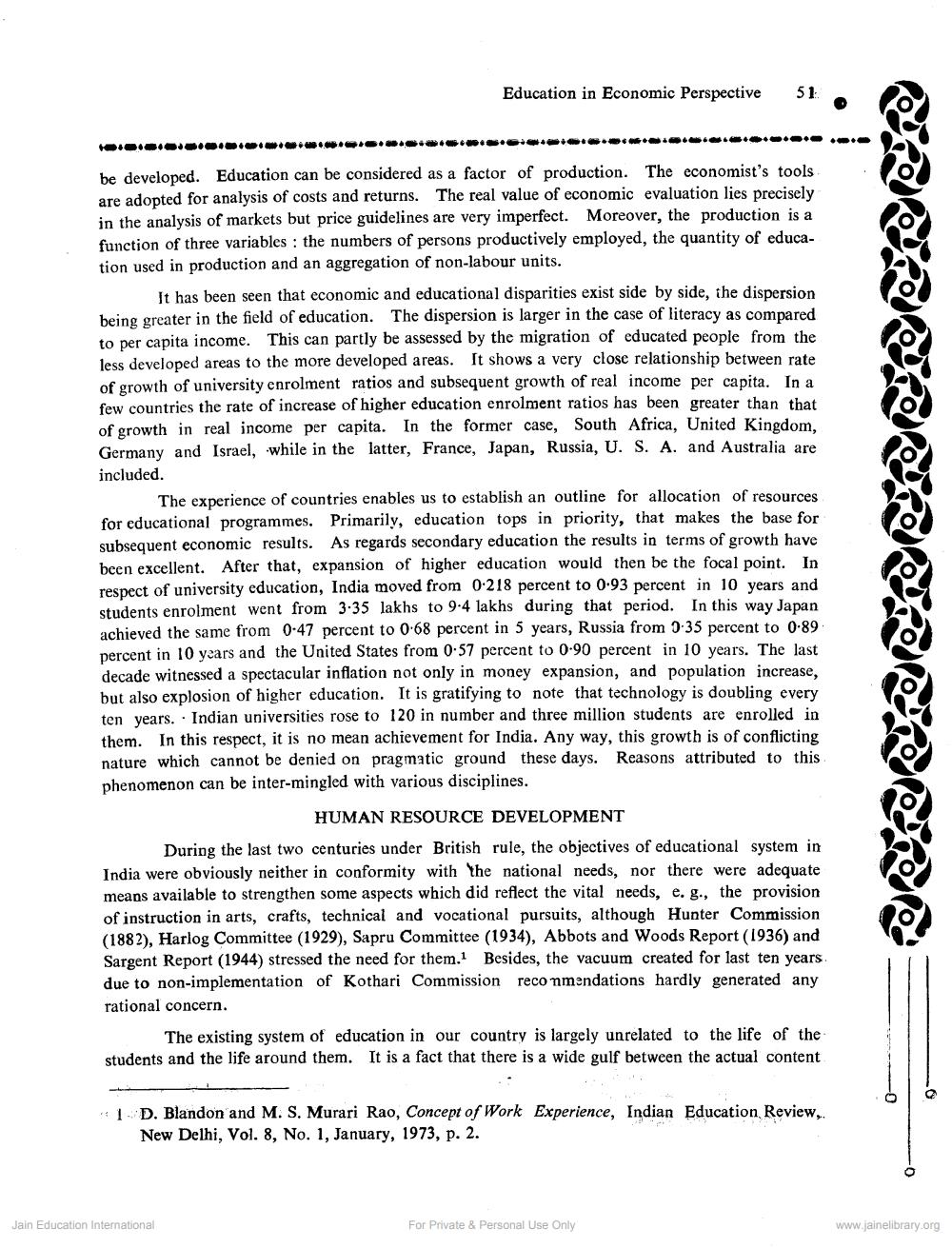Book Title: Education in economic perspective Author(s): B L Dhakad Publisher: Z_Kesarimalji_Surana_Abhinandan_Granth_012044.pdf View full book textPage 3
________________ Education in Economic Perspective 51 be developed. Education can be considered as a factor of production. The economist's tools are adopted for analysis of costs and returns. The real value of economic evaluation lies precisely in the analysis of markets but price guidelines are very imperfect. Moreover, the production is a function of three variables: the numbers of persons productively employed, the quantity of education used in production and an aggregation of non-labour units. It has been seen that economic and educational disparities exist side by side, the dispersion being greater in the field of education. The dispersion is larger in the case of literacy as compared to per capita income. This can partly be assessed by the migration of educated people from the less developed areas to the more developed areas. It shows a very close relationship between rate of growth of university enrolment ratios and subsequent growth of real income per capita. In a few countries the rate of increase of higher education enrolment ratios has been greater than that of growth in real income per capita. In the former case, South Africa, United Kingdom, Germany and Israel, while in the latter, France, Japan, Russia, U. S. A. and Australia are included. The experience of countries enables us to establish an outline for allocation of resources for educational programmes. Primarily, education tops in priority, that makes the base for subsequent economic results. As regards secondary education the results in terms of growth have been excellent. After that, expansion of higher education would then be the focal point. In respect of university education, India moved from 0 218 percent to 0.93 percent in 10 years and students enrolment went from 3.35 lakhs to 9-4 lakhs during that period. In this way Japan achieved the same from 0.47 percent to 0:68 percent in 5 years, Russia from 0-35 percent to 0.89 percent in 10 years and the United States from 0.57 percent to 0-90 percent in 10 years. The last decade witnessed a spectacular inflation not only in money expansion, and population increase, but also explosion of higher education. It is gratifying to note that technology is doubling every ten years. Indian universities rose to 120 in number and three million students are enrolled in them. In this respect, it is no mean achievement for India. Any way, this growth is of conflicting nature which cannot be denied on pragmatic ground these days. Reasons attributed to this phenomenon can be inter-mingled with various disciplines. HUMAN RESOURCE DEVELOPMENT During the last two centuries under British rule, the objectives of educational system in India were obviously neither in conformity with the national needs, nor there were adequate means available to strengthen some aspects which did reflect the vital needs, e. g., the provision of instruction in arts, crafts, technical and vocational pursuits, although Hunter Commission (1882), Harlog Committee (1929), Sapru Committee (1934), Abbots and Woods Report (1936) and Sargent Report (1944) stressed the need for them. Besides, the vacuum created for last ten years due to non-implementation of Kothari Commission recommendations hardly generated any rational concern. The existing system of education in our country is largely unrelated to the life of the students and the life around them. It is a fact that there is a wide gulf between the actual content 1 D. Blandon and M. S. Murari Rao, Concept of Work Experience, Indian Education Review, New Delhi, Vol. 8, No. 1, January, 1973, p. 2. Jain Education International For Private & Personal Use Only www.jainelibrary.orgPage Navigation
1 2 3 4 5 6 7 8
